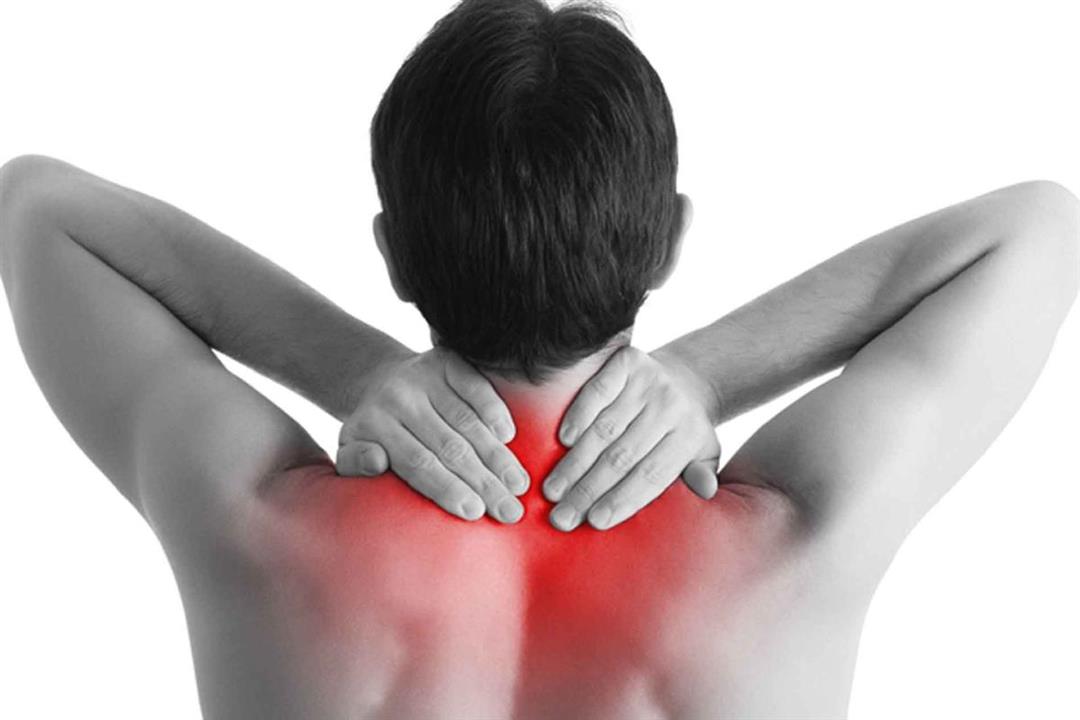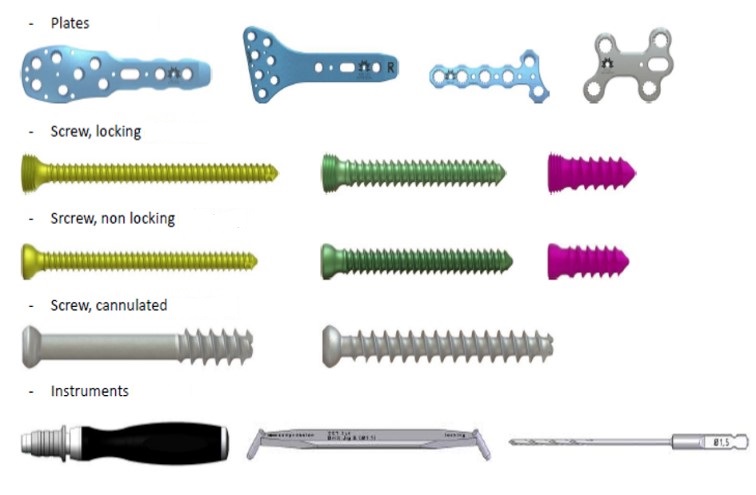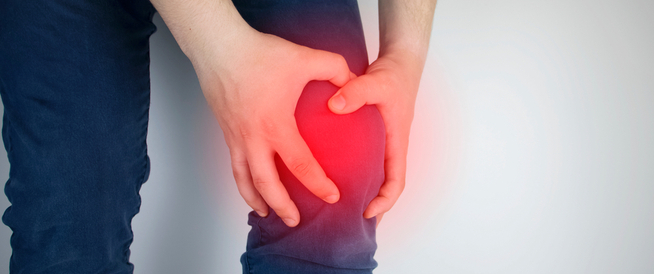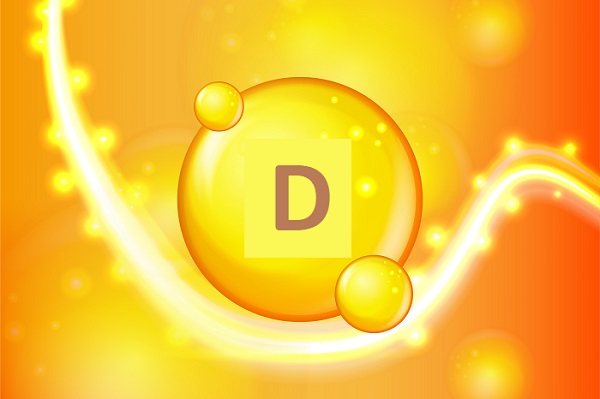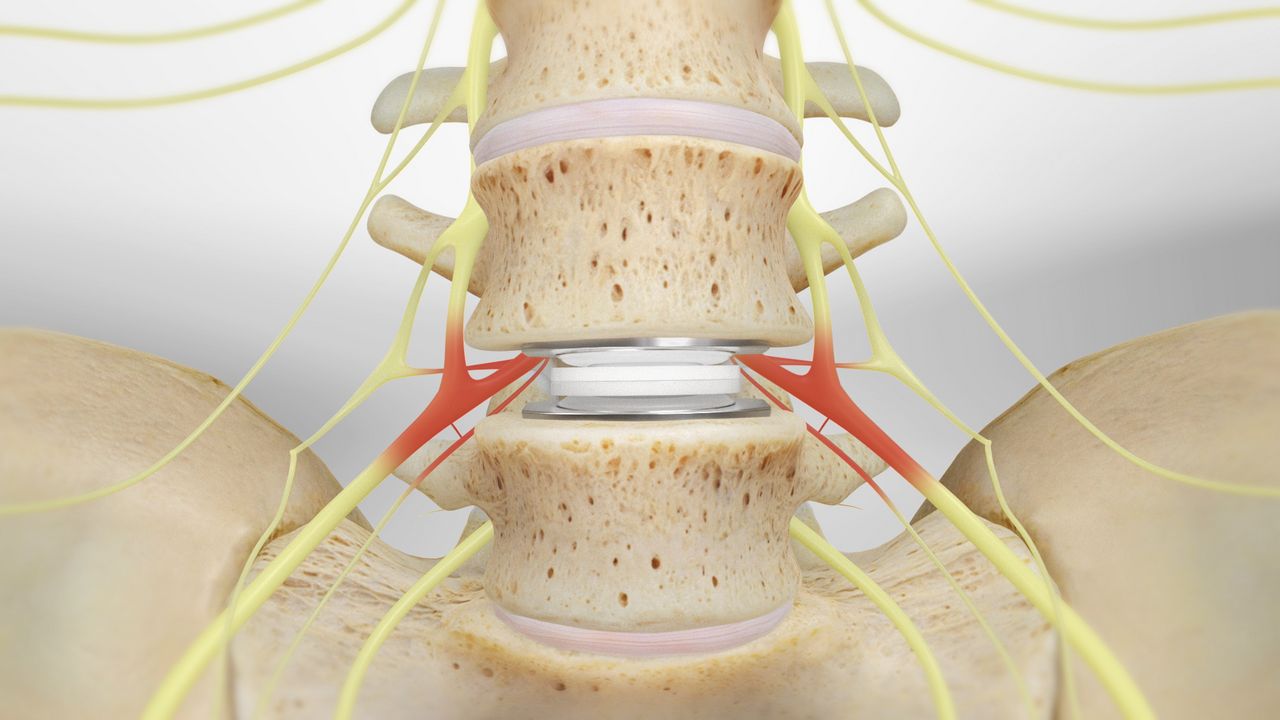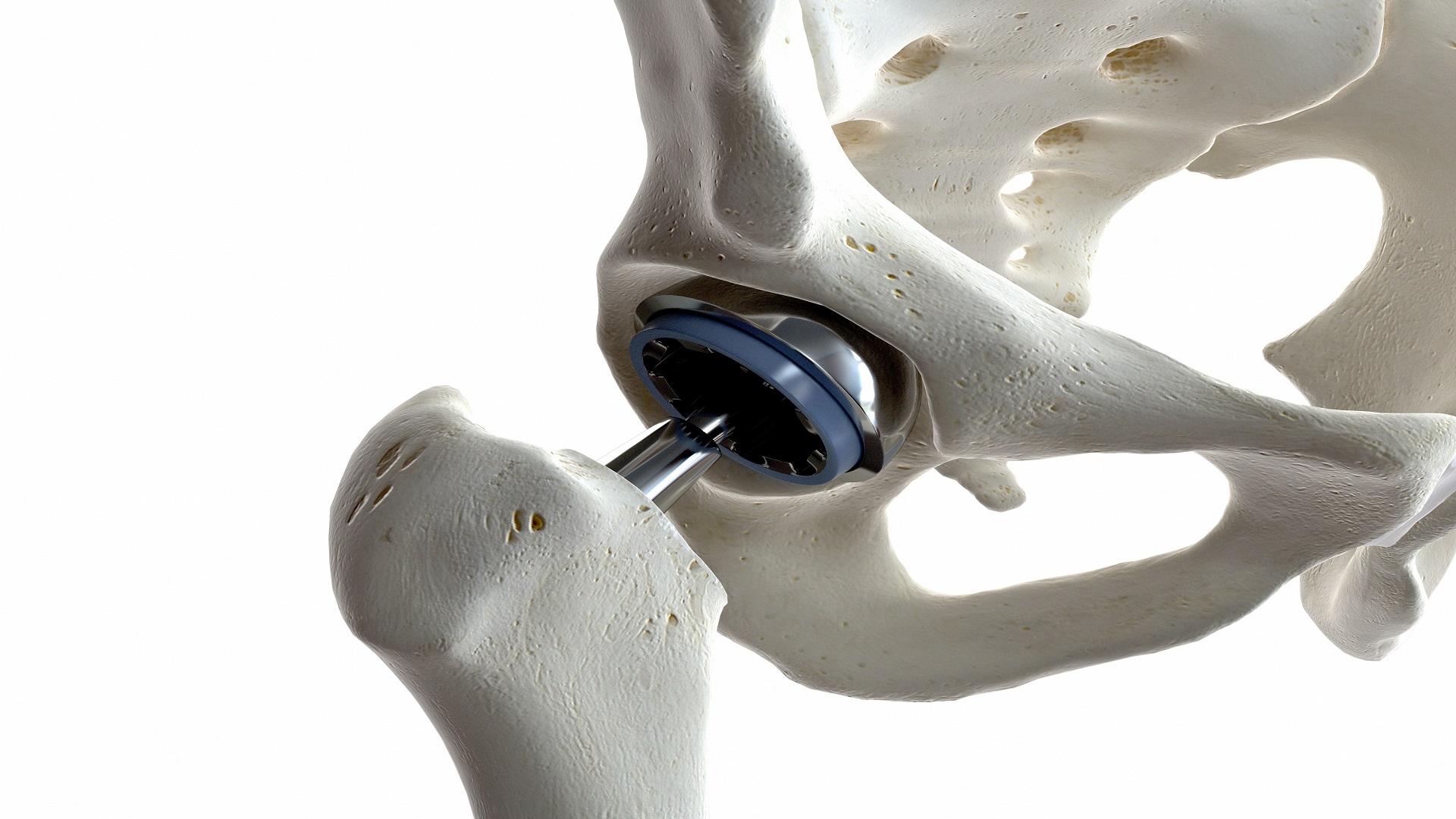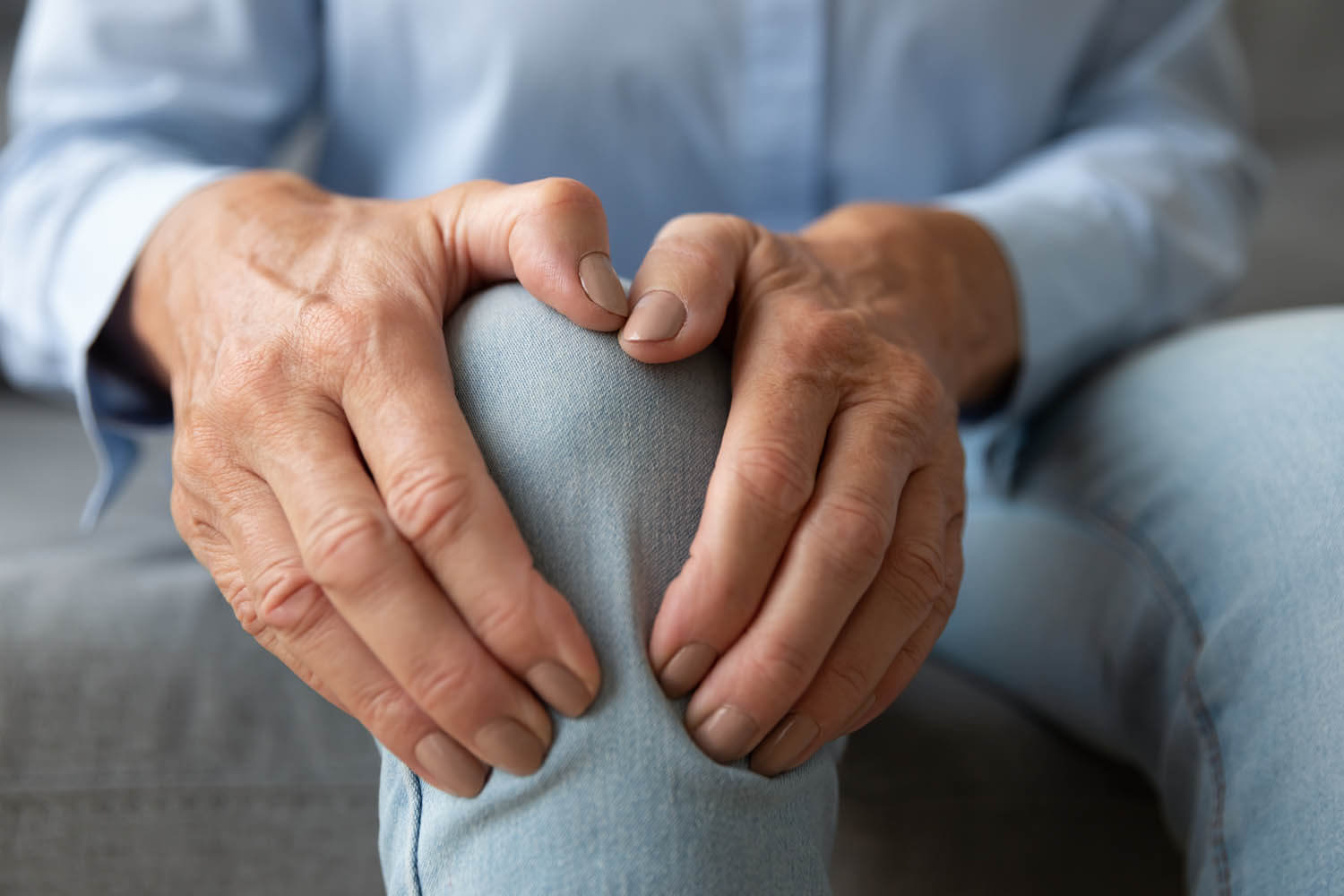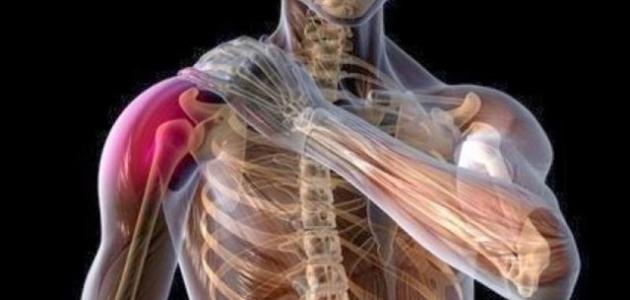What You Don’t Know About Neck Pain and the Symptoms of Cervical Disc Herniation
Neck Pain
Neck pain can be a common issue that many people encounter in their daily lives. Neck pain can be bothersome and painful, affecting mobility and the ability to perform daily activities normally. In this article, we will take a look at the causes of neck pain and its treatment.
Muscle, Tendon, and Ligament Strain: Muscle, tendon, and ligament strain are the most common causes of neck pain. This strain can result from acute or chronic muscle tension. The neck moves frequently within the body, being less stable than other areas, making it more susceptible to injury.
Shoulder Joint Problems: The shoulder joint is ball-and-socket-shaped and highly mobile. The shoulder can be a common source of neck pain. Improper body postures, such as leaning over a worktable or sitting improperly in front of a computer, can strain the neck muscles.
Osteoarthritis: Osteoarthritis is a common cause of neck pain. This inflammation can cause pain and swelling in the joints. In rare cases, neck pain may be a symptom of more serious health problems.
Injuries: The neck can be injured as a result of accidents such as car accidents or falls. If neck pain persists for several days and is not associated with improvement or is accompanied by symptoms such as headaches, numbness, or weakness, it is advisable to contact a doctor for evaluation.
Chronic Diseases: Some diseases, such as rheumatoid arthritis, meningitis, or cancer, can cause neck pain. Consult a doctor if the pain in the neck continues for a long time or is accompanied by other symptoms.
In general, preventing neck pain involves maintaining good body posture, avoiding stress, practicing relaxation exercises, and avoiding sitting for extended periods in uncomfortable positions. If neck pain persists or worsens, it is always advisable to contact a doctor for an evaluation and appropriate treatment.
How to Relieve Neck Pain?
Neck pain is a common problem that many people around the world experience. Several factors can cause neck pain, such as stress, poor sitting posture, and lack of movement. If you’re dealing with neck pain and looking for ways to alleviate it, here are five effective tips:
- Apply Heat: A warm bath can help relieve neck pain. Fill a bathtub with warm water and add a few drops of essential oil, such as lavender or peppermint oil. Relax in the water for 15-20 minutes and feel its soothing effect on your tense neck muscles.
- Adjust Your Sitting Posture: Your computer or screen should be at eye level to avoid straining your neck and eyes. Use a comfortable chair and make sure your back gets the necessary support. Regularly adjust your sitting posture to reduce neck pressure.
- Move Your Neck: Avoid sitting for extended periods without movement. Try standing up, stretching, and moving a little every hour. Simple exercises like neck and shoulder rotations can help alleviate muscle tension in the neck.
- Use a Supportive Pillow: At night, use a pillow that provides good neck support while sleeping. A proper pillow can improve your sleeping position and reduce neck pain.
- Seek Manual Therapy: Massage and chiropractic treatments can provide short-term relief from neck pain. Consult a chiropractor or a certified neck muscle therapist to receive appropriate treatment.
Whether you’re experiencing temporary or chronic neck pain, following these tips can help alleviate the pain and improve your overall condition. If the pain persists or worsens, it’s essential to consult a doctor for an evaluation and proper treatment.
What Causes Neck Pain?
Many people experience neck pain at some point in their lives, and the causes of this pain can vary from common to rare. In this list, we will outline the primary causes of neck pain:
- Muscle Stress and Tension: Stress and muscle tension are very common causes of neck pain. This type of pain can result from prolonged sitting at a computer or improper heavy lifting.
- Nerve Compression: Nerve compression in the spinal column can cause neck pain. This can be due to conditions such as a herniated disc or cervical spinal stenosis.
- Neck Injuries: Injuries like whiplash or falls onto the back can lead to neck pain. A medical diagnosis and consultation with a doctor may be necessary to assess the severity of the injury.
- Arthritis: Arthritis can be responsible for neck pain, especially in older adults. Cervical arthritis (arthritis in the neck) can cause pain and stiffness in the neck.
- Side Effects of Routine Activities: Routine activities like heavy lifting or improper exercise can lead to neck pain.
- Torn or Pressure Sores: Torn tissues that support the spine or pressure sores can cause neck pain.
- Other Medical Conditions: Other medical conditions such as rheumatoid arthritis, anemia, or poor nutrition can contribute to neck pain.
If you have persistent neck pain, it is advisable to visit a doctor for an evaluation and diagnosis. The appropriate treatment for your condition may require consultation with a spine specialist, physical therapy, or guidance on suitable exercises and self-care.
When Is Neck Pain Serious?
When anyone experiences neck pain, it can be challenging to determine whether the pain is serious or not, as the causes of neck pain can vary from simple to severe. In this article, we will explain some symptoms that may indicate different serious medical conditions associated with neck pain.
- High Fever: If you have a high fever accompanying neck pain, it may indicate inflammation in the joints or an infection.
- Headache: If you experience neck pain extending to the back of your head, it could be a sign of conditions such as meningitis or vascular disorders.
- Nausea and Vomiting: If you have severe nausea or vomiting while experiencing neck pain, it may suggest high blood pressure in the brain or the presence of a tumor.
- Fatigue: If you feel excessive tiredness and continuous fatigue, it may indicate a serious health condition like low hemoglobin levels in the blood or liver toxicity.
- Dizziness or Loss of Balance: If you suffer from balance disturbances and loss of coordination, it could indicate problems with the nervous system or a nerve tumor.
It is important to understand that these symptoms are not an exhaustive list, and there may be other serious causes of neck pain. Therefore, if you are experiencing neck pain and any of these symptoms, it is advisable to consult a doctor for an accurate diagnosis and appropriate treatment.
Do not underestimate any symptoms that accompany neck pain, as these pains could be a sign of a new health condition or a problem that requires urgent medical care. Maintain a healthy lifestyle and perform appropriate neck exercises to strengthen the muscles and avoid excessive tension and stress.
What Is the Treatment for Neck Pain in the Back?
Many people suffer from neck pain accompanied by a feeling of pain and tension in the neck and shoulders. The cause may be various factors such as muscle tension, inflammation, or muscle spasms. In this case, it is essential to know the best available options for treating neck pain in the back. Here are some options to consider:
- Rest and Ice Applications: Cold compresses or ice wrapped in a towel can be placed on the neck area to reduce inflammation and alleviate pain. It may be helpful to avoid strenuous activities and relax the muscles in general.
- Massage and Stretching Exercises: Massage can provide relief for muscle pain and tension in the neck, so you may consider seeking a professional massage therapist for sessions. Daily neck stretching exercises can contribute to relieving tension and improving joint mobility.
- Use of Pain Relieving Medications: Over-the-counter anti-inflammatory medications like ibuprofen can be used to relieve pain and inflammation. Topical pain-relieving medications, such as creams or topical gels, may also be beneficial.
Physical Therapy: Physical therapy can help alleviate neck pain from the back, involving massage sessions, muscle strengthening exercises, and improving muscle tension.
Traditional and Alternative Treatments: This treatment includes techniques such as psychotherapy, classical acupuncture and acupuncture, and massage with essential oils.
Whichever option you choose for treating back neck pain, it is advisable to consult a doctor before taking any medication or resorting to any form of treatment. General health factors and medical history should be taken into account before making any treatment decisions. It is also essential to perform exercises correctly and obtain the necessary guidance from a certified specialist.
How to Relieve Neck Muscle Tension?
How can you get rid of neck muscle tension?
Many people suffer from the problem of neck muscle tension, which may be due to prolonged sitting in front of the computer, nervous tension, physical stress, or unhealthy sleeping habits. This problem can cause pain, muscle contractions, fatigue of the body and mind. In this article, we will discuss some ways that can help you relieve neck muscle tension.
Stretching and Relaxation Exercises: Gently massage the neck muscles using circular motions with a soft push. Perform the familiar neck stretching exercise, which involves turning your head from side to side several times. Extend and tilt your head to the right and left for 10 seconds on each side. Extend your head backward for 10 seconds. Perform the vertical neck stretching exercise by extending your head towards the ceiling with slight pressure. Application of Heat and Cold: Use hot compresses to relieve tense muscles in the neck by placing them on painful areas for 15-20 minutes. Use cold compresses to reduce swelling and inflammation of tense muscles by placing them on painful areas for 15-20 minutes.
Exercise and Physical Activity: Engage in neck relaxation exercises such as yoga and meditation. Take regular breaks during the day for neck exercises and stretching. Participate in suitable physical activities like brisk walking or swimming to strengthen the muscles and relieve tension. Deep Breathing: Take deep, slow breaths to reduce tension and maintain nerve balance. Pay attention to your body’s posture during daily activities: Ensure that your body posture is correct when sitting, standing, and moving. Use an appropriate pillow to support your neck and head while sleeping.
Before implementing any of these methods, it is essential to consult a doctor if neck muscle tension persists for an extended period or if symptoms worsen significantly. A doctor is best suited to diagnose the condition and provide appropriate treatment.
Can Vitamin D Deficiency Cause Neck Pain?
It is known that a vitamin D deficiency in the body can lead to various health problems, one of which is potential bone pain, especially in the neck. When there is a deficiency in vitamin D, calcium absorption in the body becomes inadequate, affecting bone health and increasing the risk of injury.
To determine whether a vitamin D deficiency is the primary cause of neck pain, it may be necessary to undergo testing and consult with a specialized doctor. However, there are some signs that may indicate that neck pain could be due to a vitamin D deficiency:
Muscle Tension: What you may be experiencing is muscle tension, which is a common symptom of vitamin D deficiency. Muscle tension can lead to pain and tightness in the neck and between the shoulders. Muscle Weakness: Vitamin D deficiency is also associated with muscle weakness. You may feel unable to engage in any activity due to constant fatigue, lack of motivation, and strength. Bone Issues: When there is a vitamin D deficiency, calcium absorption in the body decreases. This means that bones may become more susceptible to damage and injury. This can result in bone pain, especially in the neck.
Neck pain can also result from other factors, such as muscle tension caused by prolonged computer use or improper sleeping positions. Therefore, before diagnosing vitamin D deficiency as the cause of neck pain, it is essential to consult a specialist doctor and undergo appropriate tests.
Balancing vitamins and minerals in the body and maintaining proper nutrition is crucial to avoid any vitamin deficiencies and ensure an adequate intake of vitamin D through direct sunlight exposure and consumption of vitamin D-rich foods such as fatty fish, egg yolks, and fortified milk.
What Are the Symptoms of Neck Ligament Tear?
Neck ligament tear is a common injury and can occur due to various reasons, such as car accidents, vigorous sports, or falls. Ligament tears in the neck can have significant effects on neck movement and the overall comfort of the affected person. In this short text, you will find a list of the most important symptoms that may appear with a neck ligament tear:
- Sharp Pain: Individuals with a neck ligament tear experience sharp pain in the affected area. The pain may worsen with neck movement or when pressure is applied to the injured area.
- Swelling and Bruising: Those with a neck ligament tear may notice swelling and inflammation in the affected area. This swelling can be accompanied by visible bruising on the skin.
- Difficulty in Neck Movement: The injured person may have difficulty moving their head and neck smoothly. There may be limitations in motion or a sensation of stiffness in the neck.
- Instability: Due to the ligament tear, the affected individual may feel neck instability. They may sense their head shaking or moving abnormally.
- Muscle Weakness: People with a neck ligament tear may notice a weakness in the neck and shoulder muscles. This effect can impact their ability to perform daily activities normally.
- Radiating Pain and Similar Symptoms: Those with a neck ligament tear may experience pain radiating to the arms. They may also feel tingling or numbness in their arms.
- Difficulty Concentrating and Sleeping: Patients with a neck ligament tear may have trouble focusing or sleeping due to severe pain and discomfort.
If you experience any of these symptoms and suspect a neck ligament tear, you should consult a doctor immediately. Your condition needs to be diagnosed through medical examinations, and you should see an experienced physician to receive the appropriate treatment. Neck ligament tears require rest and proper medical care to avoid complications and achieve full recovery.
What Are the Symptoms of Cervical Disc Herniation?
Cervical disc herniation is a common health issue affecting many individuals. While the severity and impact of symptoms can vary from person to person, there are some common symptoms one should be aware of. In this article, we will explore the primary symptoms of cervical disc herniation and how to treat them.
Neck Pain: Neck pain is one of the prominent symptoms experienced by those with cervical disc herniation. The pain can be constant or intermittent, and it may worsen when moving the neck or sleeping in an uncomfortable position.
Radiating Pain to Arms and Shoulders: Pain resulting from disc herniation may extend to the arms and shoulders. Patients may also experience tingling and numbness in these areas.
Muscle Weakness and Loss of Control: Muscle weakness and a loss of control over neck movement are common symptoms of cervical disc herniation. Patients may find it challenging to walk steadily and maintain proper balance.
Tingling and Numbness in Upper Limbs: Some patients may feel tingling or numbness in the upper limbs, such as hands and fingers, due to cervical disc herniation.
Muscle Spasms and Abnormal Reactions: Muscle spasms and abnormal reactions in the affected areas may occur, leading to difficulty in neck and shoulder movement.
If any of these symptoms appear, it is advised to consult a specialist doctor for an accurate diagnosis and the development of an appropriate treatment plan. Treatment options may include physical therapy, muscle strengthening exercises, and the use of pain-relieving medications. In more severe cases, surgery may be required to repair the affected disc and restore neck health.
The diagnosis and treatment of cervical disc herniation should be carried out under the supervision of specialized medical professionals. Patients should diligently follow medical instructions and engage in regular follow-ups for the best outcomes.
How to Massage the Neck?
Many people experience neck pain due to prolonged sitting in front of a computer or engaging in activities that require frequent head and neck movement. Neck massage can be an effective solution for relieving this pain and improving flexibility and circulation in the neck area. In this article, we will highlight some neck massage techniques that can be helpful.
- Hand Massage:
- You can massage your own neck with your hands to achieve a simple and soothing massage effect. Place the middle and index fingers on the upper part of the neck and move them in circular motions while gently lifting. Repeat the same movement from the other side. You can also use your thumbs to gently press on neck muscles to relieve tension.
- Massage with a Massage Ball:
- You can use a massage ball to achieve a deep and targeted massage in specific neck areas. Place the ball on the muscle you want to massage and apply gentle pressure while moving it in a clockwise and then counterclockwise direction. Repeat this movement in different areas of the neck.
- Neck Stretching:
- Neck stretching can also be effective for a massage. Place your hands on your head from both sides and try to gently pull your head upward, keeping in mind not to apply excessive pressure. Continue the stretch for a few seconds, then return to the original position. You can repeat this movement several times to stretch the muscles and relieve tension.
- Neck Strengthening:
- In addition to massage, simple exercises can also help relieve neck pain and strengthen the surrounding muscles. Exercises like neck extensions and slow rolling from shoulders to the front and back can be performed.
With caution and gentle massage techniques, neck massage can improve blood circulation, reduce tension, and relieve muscle pain. However, be careful not to apply excessive pressure or massage in cases that may require specific medical attention. If you have chronic neck problems, it is advisable to consult a doctor before practicing any massage technique.
How to Sleep with Neck Pain?
When you experience neck pain, finding a comfortable sleeping position can be challenging. However, there are some guidelines and sleeping postures that can help alleviate pain and provide comfort during sleep. In this article, we will provide you with some tips on how to sleep properly with neck pain.
- Sleeping on Your Back:
- Sleeping on your back is considered the best position for the neck due to the level of support it provides. Use a pillow that supports the natural curve of your neck from behind and another thin pillow under your head.
- Sleeping on Your Side:
- If you prefer sleeping on your side, ensure that your neck and spine are in a straight line without any bends. Use a pillow that supports your head and neck to achieve this.
- Use Supportive Pillows:
- Use specially designed neck pillows that provide the necessary support and maintain the alignment of the spine. Choose a pillow that is ideal for the shape and size of your neck.
By following these guidelines and using supportive pillows, you can minimize neck pain and discomfort during sleep. It’s important to find the sleeping position that works best for you and allows for a restful night’s sleep while minimizing strain on your neck.
Avoid Sleeping on Your Stomach: Sleeping on your stomach can cause excessive pressure on the neck and result in spinal misalignment. It is advisable to avoid this position if you are experiencing neck pain.
Relaxation and Stretching Exercises: Before sleeping, perform simple exercises to relax and stretch your neck. You can gently rotate your neck, tilt your head forward and backward, and stretch your legs. These exercises will help reduce tension and soothe the muscles.
Avoid High Pillows: Ensure not to use a pillow that is too high, as it can put your neck in an unnatural position. Use a pillow of suitable height and firmness to provide optimal neck support.
Localized Heating: If your neck pain is associated with muscle fatigue and tension, place a localized heating pad on the painful area before bedtime. The heat will help alleviate pain and reduce muscle tension.
Remember that everyone has individual needs, so you may need to experiment with different guidelines and postures to find what suits you best. If neck pain persists during sleep, it is advisable to consult a doctor for an evaluation and guidance on necessary care.
